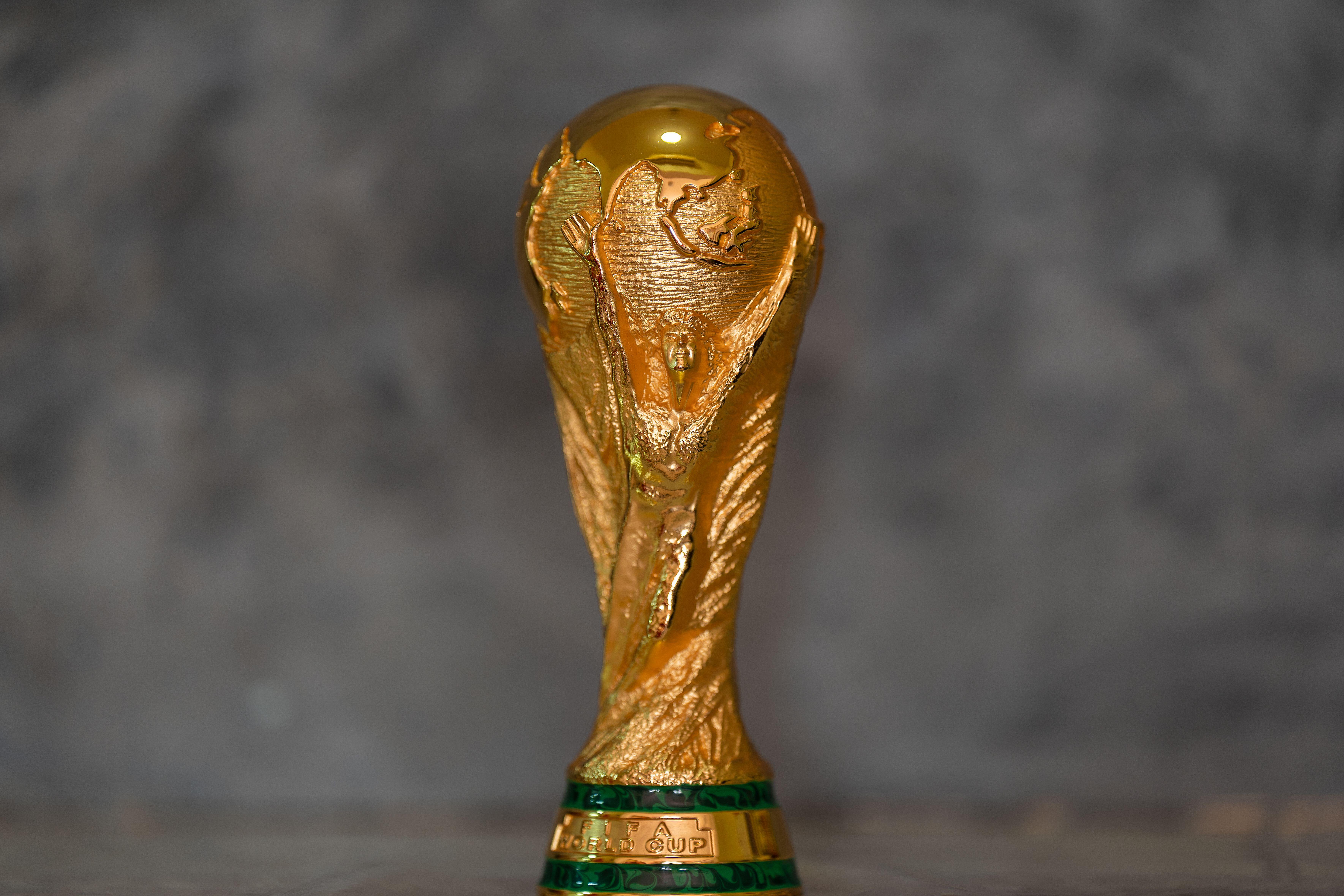Ranked! The 100 best stadiums in the world
The best stadiums in the world from all corners of the globe: this is your ultimate match-going bucket list
40. Old Trafford
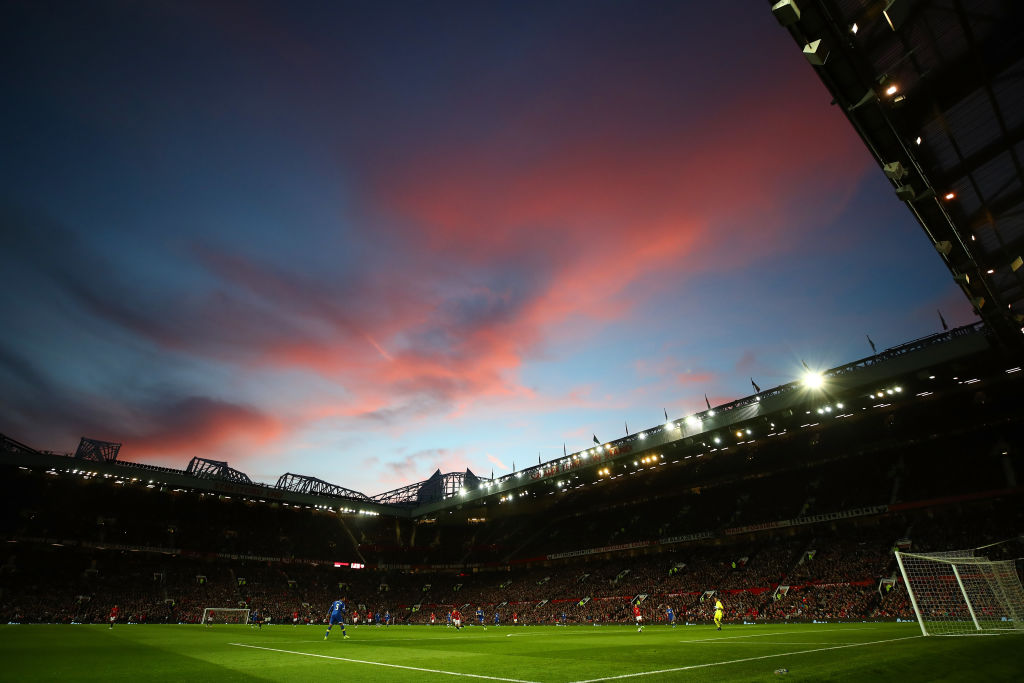
📍 Manchester, England
🏠 1910
🏟 74,310
The Theatre of Dreams, as coined by Sir Bobby Charlton. The Castle of Nightmares for many a visitor. On the stadium tours, even non-United fans get caught up in the history and nostalgia draped across posters, tributes and wall murals in the inner sanctums of the Premier League’s biggest stadium.
With their former Bank Street Ground blighted by poor pitch conditions and fumes from nearby factories, United’s then-president John Henry Davies lent the club the money to relocate to a patch of ground near to the Bridgewater Canal, Old Trafford. Even back then, rival fans moaned about their wealthy counterparts. Becoming chairman upon saving the cash-strapped club in 1902, Davies had overseen a change of name from Newton Heath to Manchester United, and colours from green and yellow to red and white; now, he lent them £60,000 – £5m in today’s money – to move home. No wonder other fans called the club ‘Moneybags United’.
Davies hired the popular Scottish architect Archibald Leitch – who had a hand in the design of some 20 football stadiums around the time, helping to build Ibrox, Anfield, Twickenham, Hillsborough, White Hart Lane and more. The development was completed in 1909 but officially opened early the next year. Old Trafford was born. – GM
39. Stadion An der Alten Forsterei
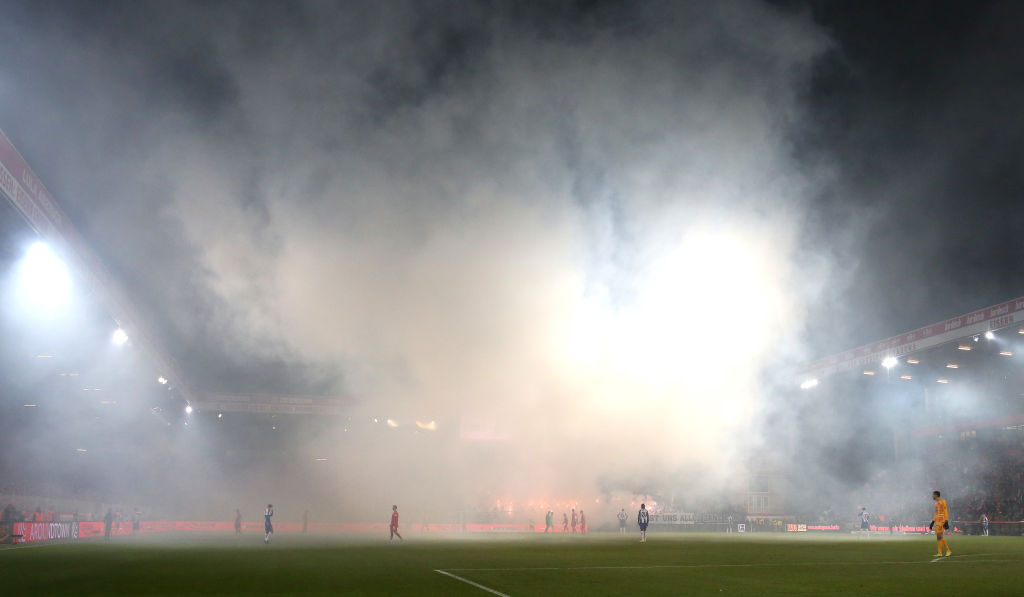
📍 Berlin, Germany
🏠 1920
🏟 22,012
Union Berlin’s brilliant ground won’t be winning architecture awards, but you can’t design charm like this. Nestled in a clutch of forest in Germany’s capital city, the second-tier side’s home has gone through some rough times: in 1966 it was expanded to its current capacity, but the club couldn’t afford its upkeep in the underdeveloped East Germany and only in 2008 – long after the nation’s reunification – was its cinder terracing replaced with concrete, a roof built, undersoil heating installed and a modern scoreboard introduced.
But that was no ordinary building work: most of it was done with the help of around 2,300 Union fans who volunteered their services to bring their team’s stadium into the 21st Century. It’s those same fans who create a racket on matchdays, and who only three seasons earlier had donated their blood to raise the money required for a league licence.
Get FourFourTwo Newsletter
The best features, fun and footballing quizzes, straight to your inbox every week.
Since 2003, meanwhile, the stadium has hosted its famous annual Christmas carol singing event. In 2014, fans were invited to bring their sofas to watch Germany’s World Cup-winning run. This, as you can tell, is no ordinary club – and certainly no ordinary stadium. – JB
38. Veltins-Arena
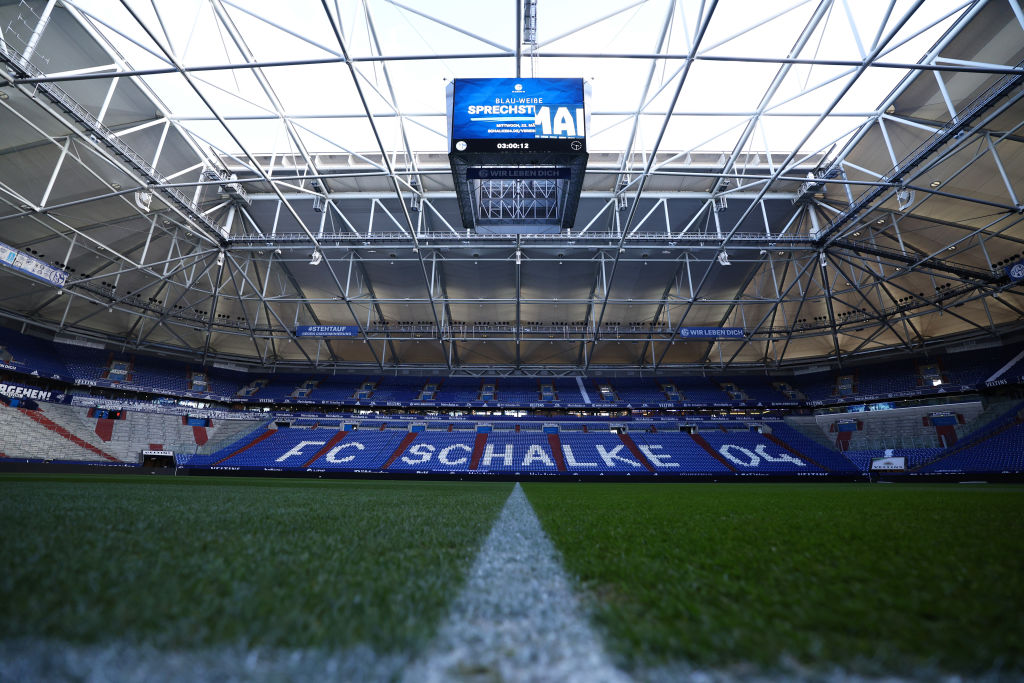
📍 Gelsenkirchen, Germany
🏠 2001
🏟 62,271
Schalke’s modern home is among the world’s most technologically advanced – which is perhaps to be expected for a stadium that cost €191m to build in 2001. Its retractable roof is impressive in itself, but it also has a slide-out pitch that’s movable in four hours. Marry that with its centrally suspended scoreboard and one of the coolest tunnels around – celebrating the region’s coal-mine heritage – and the Veltins-Arena is a far cry from its outdated Parkstadion predecessor.
Before hosting five games at the 2006 World Cup – including England’s penalty shoot-out defeat to Portugal in the quarter-finals – what was then the Arena AufSchalke welcomed Porto and Monaco for the 2004 Champions League Final which saw Jose Mourinho & Co. crowned kings of Europe. – JB
37. Emirates Stadium
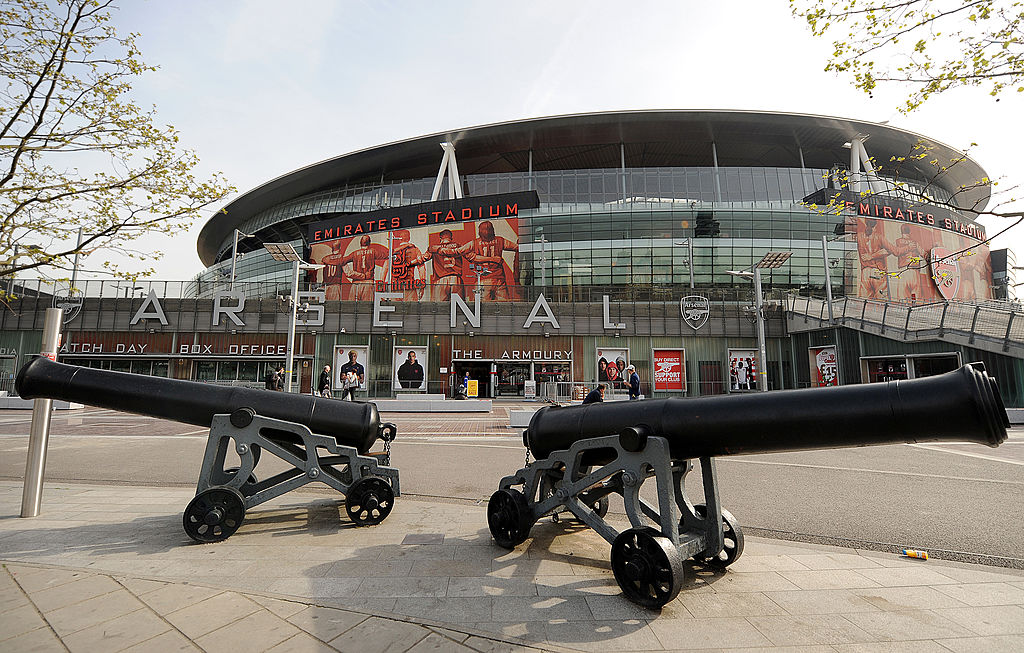
📍 London, England
🏠 2006
🏟 60,704
In FFT's run-through of the best British stadiums in 2021, we declared of the Arsenal stadium, "Those who mock have never heard it rock". Well, in the two years since that compendium, Gooners sure have seen it rock a little more.
When the Emirates Stadium opened in 2006, it was a pinnacle of modern architectural achievement in English football: a Luz-looking, glassy bowl with a slim middle tier for hospitality, beautifully curved slopes and a dressing room co-designed by the manager. But there was something that always felt a little… empty. Was it the decline of the team? The fact that they built this for the middle class? The surface at N7 is as immaculate as N5's Highbury down the road – the atmosphere has taken a little longer to get there.
Through 'Arsenalification' – installing an Ashburton Army, reflecting fans in murals around the grounds and, y'know, the team resembling some of Arsenal's better ones, now – the Emirates is finally befitting of the hype with which it came, when Arsene Wenger stood at ground zero on the construction site in a hard hat. It doesn't just feel like home, now: it feels quintessentially Arsenal's home. – MW
36. Stadion Narodowy
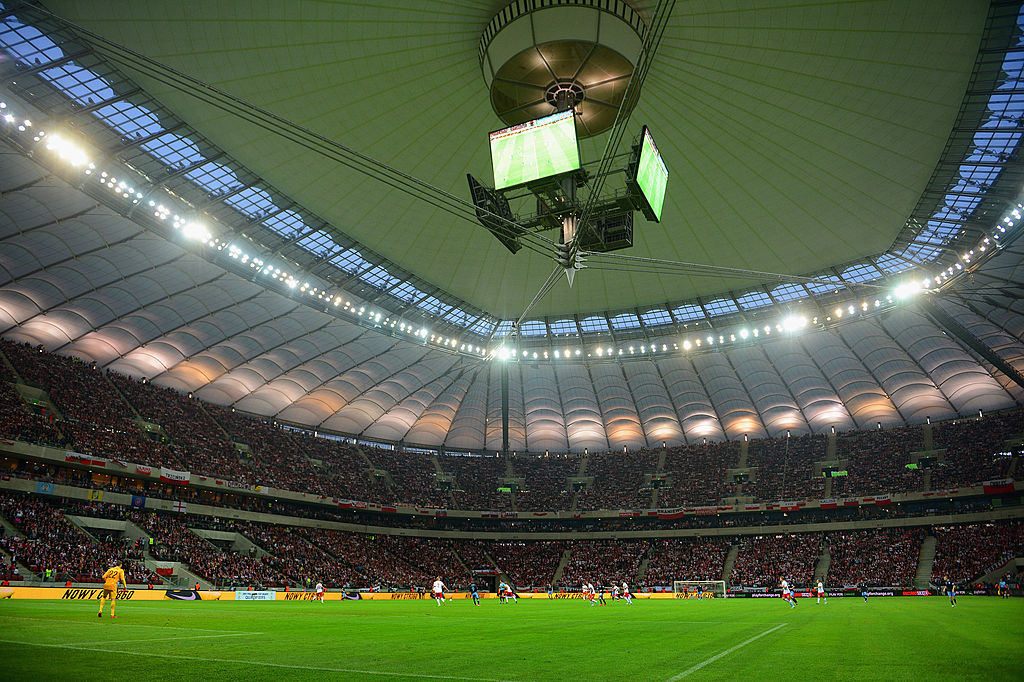
📍 Warsaw, Poland
🏠 2012
🏟 58,580
Translated simply as ‘national stadium’, the £400m arena was built for Euro 2012 and features a particularly dramatic retractable roof, which unfolds from a nest suspended above the centre of the pitch.
The only problem is the roof can’t be closed while it’s raining, and no-one thought to check the weather forecast before their World Cup qualifier with England in 2012. The heavens opened and ITV viewers were forced to watch an hour of Adrian Chiles desperately filling air-time, before a delayed kick-off became match officially postponed and we could all watch a rerun of Midsomer Murders instead.
The stadium’s circular exterior features a red and white colour scheme designed to imitate a waving Polish flag, and the venue towers over the adjacent River Vistula that separates it from Warsaw’s city centre. The UEFA Category 4 stadium was built on the site of the dilapidated 10th Anniversary Stadium and hosted the intriguing 2013 Science Picnic as well as the 2015 Europa League final – won by Sevilla, as usual. – CF
35. St James' Park
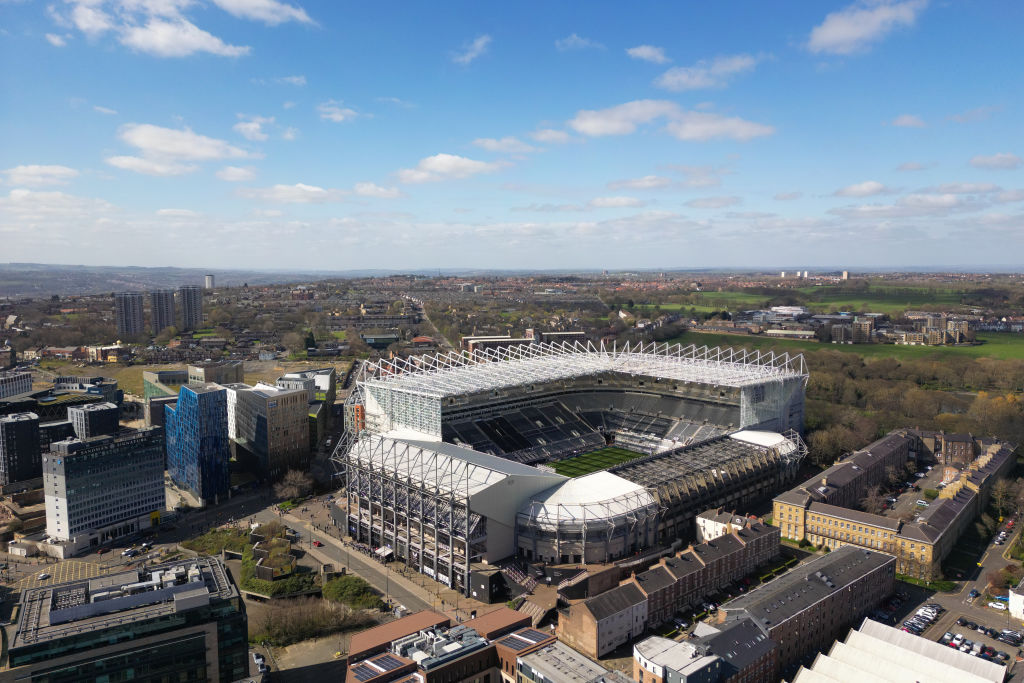
📍 Newcastle, England
🏠 1892
🏟 52,305
In world of identikit out-of-town sports bowls, St James’ Park’s charm as a proper city-centre stadium endures. Perched at the top of a hill overlooking the one-club, football-mad Toon like a castle, its somewhat lopsided, skewed appearance is a product of circumstances: unable to expand in certain directions, it has modernised in a uniquely asymmetrical manner.
Like Anfield, St James’ Park predates its famous tenants: football has been played here since 1880, whereas United were formed in 1892. Originally built on grazing land, close to the area where public executions were carried out – hence the Gallowgate End’s macabre moniker – it is a testament to overcoming planning permission nightmares.
Anyone with vertigo is advised against a seat high in the Leazes End, but otherwise, matchday here is a joy: the proximity to the station; the pint in The Strawberry or Shearer’s beforehand, and an old-school volume level that the imposing stands trap effectively – and defies a difficult era in which this proud place briefly and moronically became the Sports Direct Arena. – NM
34. Soccer City
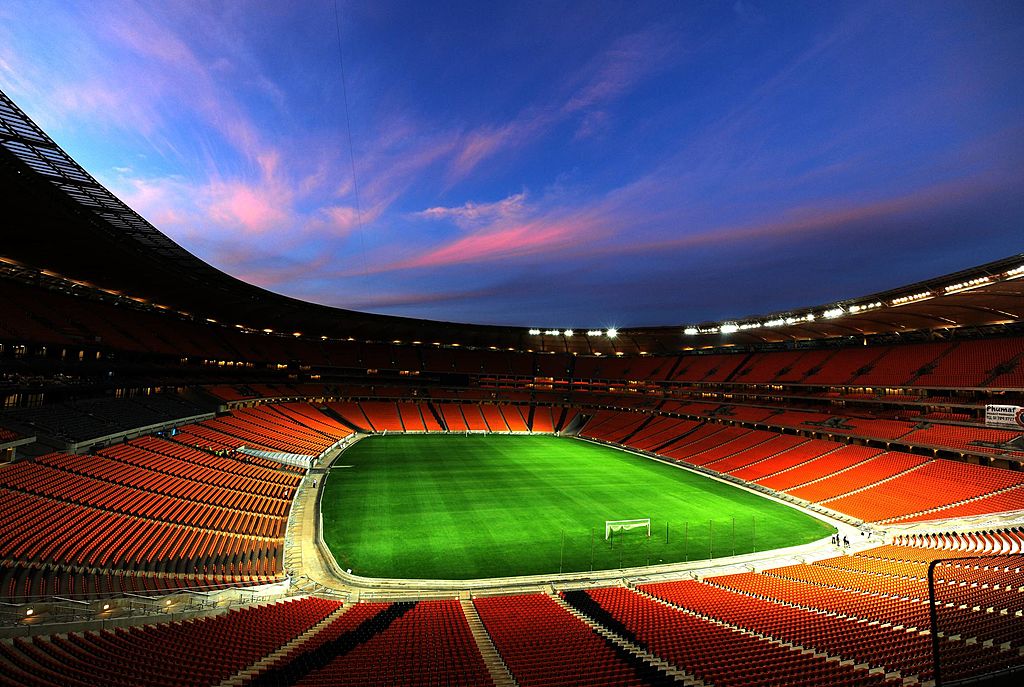
📍 Johannesburg, South Africa
🏠 1989
🏟 94,736
Johannesburg's FNB Stadium became the largest in Africa when it reopened, branded Soccer City, for the 2010 World Cup. Its capacity was reduced to 85,000 for that tournament but that failed to detract from its atmosphere both inside and out.
Thrilling to behold when lit up, it is modelled on a calabash, a kind of African pot, and certainly resembled a cauldron within – particularly when Siphiwe Tshabalala scored the tournament's first goal and when Ghana carried African hopes in the quarter-finals against Uruguay. Situated outside the centre of town, near Soweto, it has remained in regular use since the World Cup final, hosting several games at the 2013 Africa Cup of Nations. – NA
33. Sukru Saracoglu
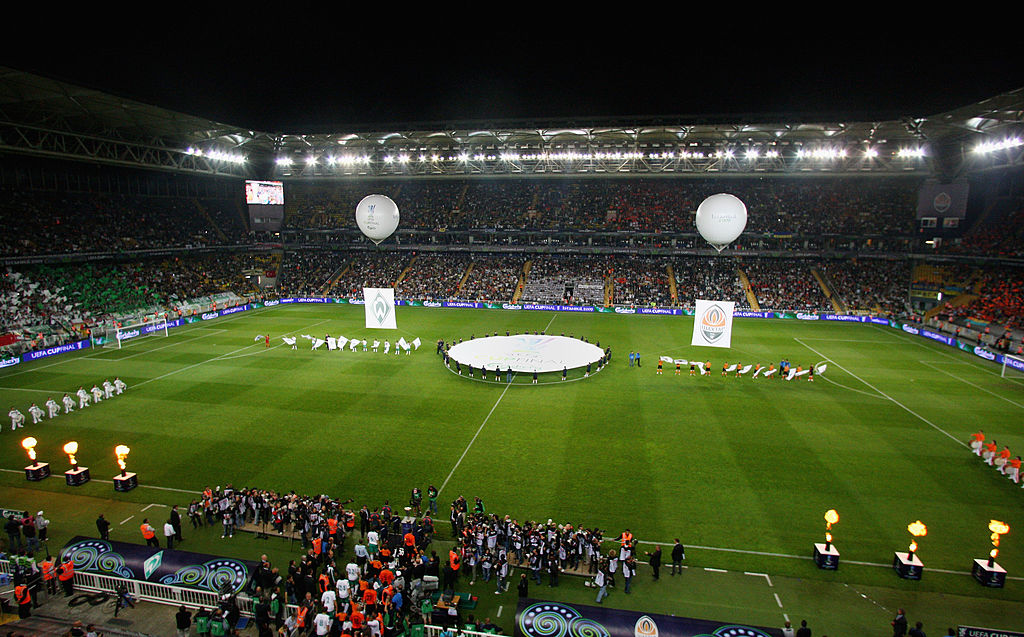
📍 Istanbul, Turkey
🏠 1908
🏟 47,834
The birthplace of Turkish football: the site upon which Fenerbahce currently operate was once known as the Field of the Priest – and was where the original Istanbul Football League kicked off soon after Englishman Henry Pears brought the game to the region.
It’s since ticked off numerous other records: Fener became the first Turkish club to own their stadium, which soon became the country’s largest. It has been systematically dismantled and rebuilt, one stand at a time between 1999 and 2006, but has preserved what made it special: a straightforward, straight-sided box, it’s hugely imposing, but with all the bells, whistles and legroom you’d expect from a UEFA Category 4 Arena once you’re inside. – NM
32. Millerntor-Stadion
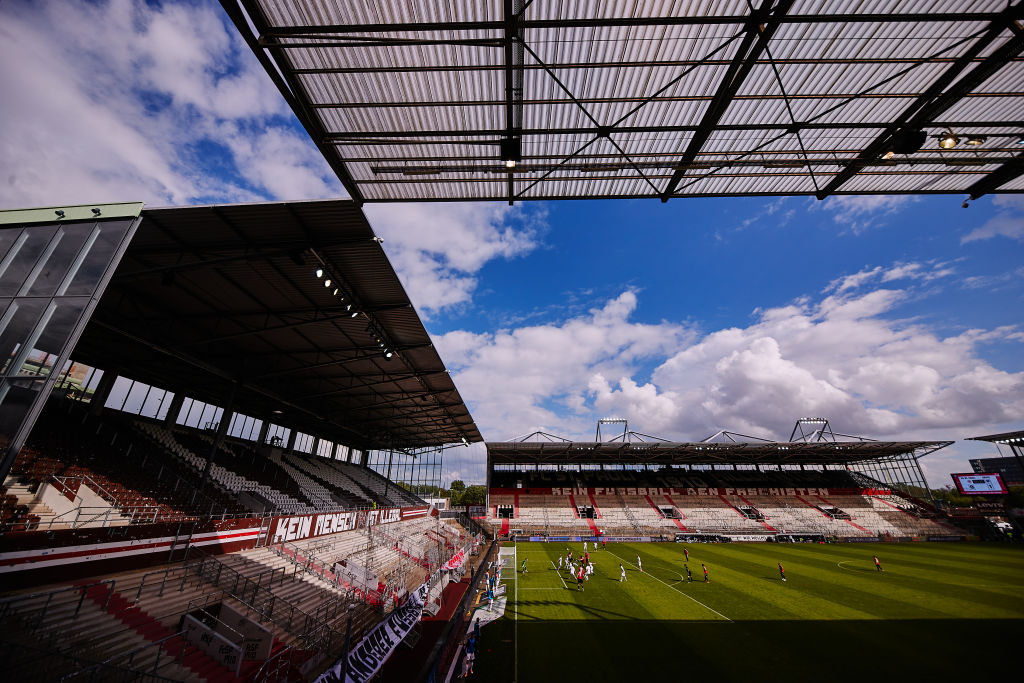
📍 Hamburg, Germany
🏠 1963
🏟 29,546
Sausage train. Need we say more when explaining why the German zweite bundesliga outfit’s ground features here? How many other stadiums have a stand containing personal beer pumps located under each seat and a train running past serving hot German sausage every five minutes?
If that doesn’t get your pork juices flowing, then how about the renowned ambience in situ at one of Germany’s most popular ‘kult’ clubs? In the December 2015 issue of FourFourTwo we said its club shop is arguably the best in the world – and that’s before you even get into the stands, wherein a cracking match atmosphere marries football passion and heavy metal music with skull-and-crossbones flags. – GM
31. Cairo International Stadium
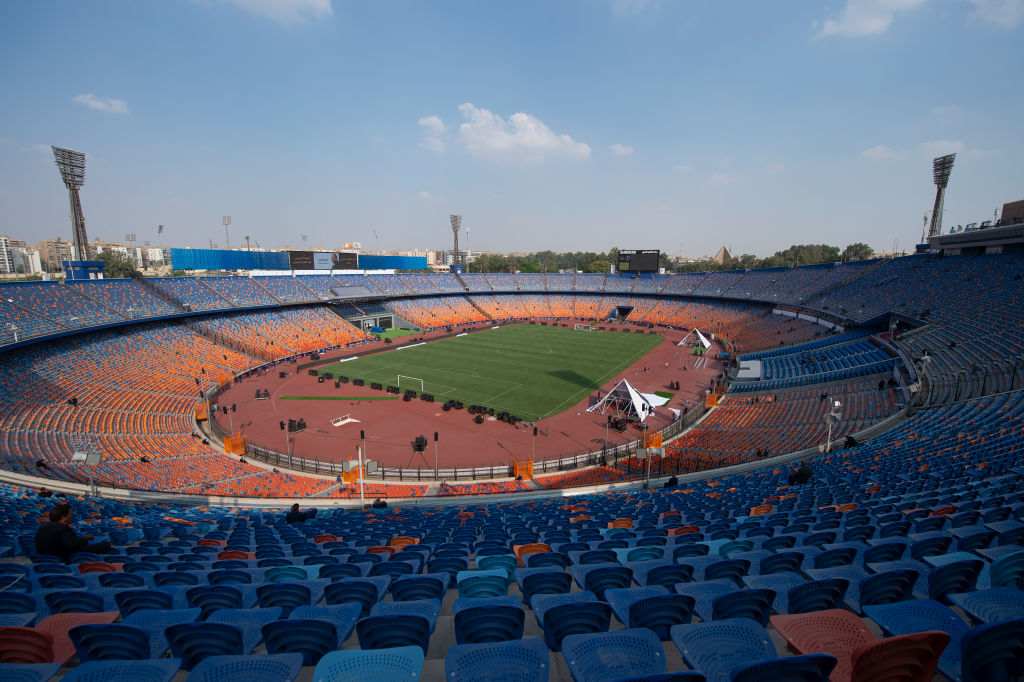
📍 Cairo, Egypt
🏠 1960
🏟 75,000
One of the largest and loudest stadiums in Africa, the Cairo International Stadium had a reputation as a wild, exciting and sometimes dangerous venue before its renovation in time for the 2006 Africa Cup of Nations.
Huge crowds used to cram inside, often far beyond its official capacity: at least 120,000 fans are said to have taken in the 1986 Africa Cup of Nations Final, in which the host nation defeated Cameroon. It has been tamed slightly since then, although you wouldn't have known it when Egypt won the 2006 tournament, this time against Ivory Coast, on a febrile night in the capital.
The stadium has held many Egyptian derby fixtures between Al Ahly and Zamalek – one of world football's unmissable occasions before tragic recent events intervened in the country – and remains the physical and spiritual home of a national team currently looking to scale its old heights once more. – NA
Current page: The 100 best stadiums in the world: 40-31
Prev Page The 100 best stadiums in the world: 50-41 Next Page The 100 best stadiums in the world: 30-21
Mark White has been at on FourFourTwo since joining in January 2020, first as a staff writer before becoming content editor in 2023. An encyclopedia of football shirts and boots knowledge – both past and present – Mark has also represented FFT at both FA Cup and League Cup finals (though didn't receive a winners' medal on either occasion) and has written pieces for the mag ranging on subjects from Bobby Robson's season at Barcelona to Robinho's career. He has written cover features for the mag on Mikel Arteta and Martin Odegaard, and is assisted by his cat, Rosie, who has interned for the brand since lockdown.
